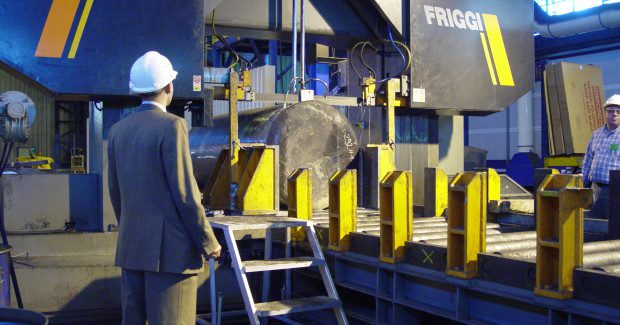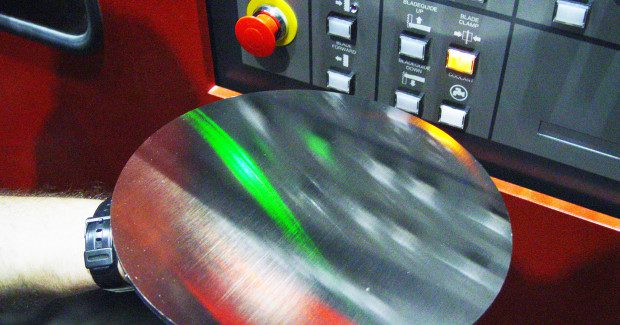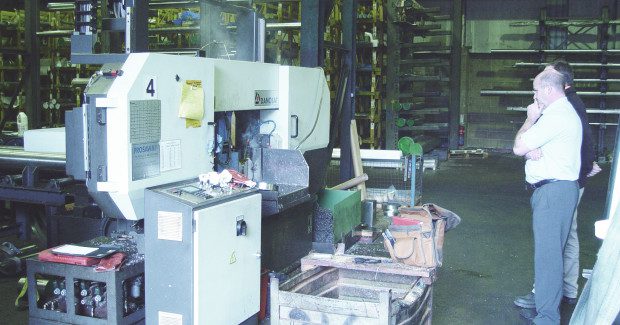Sweeten Your Bottom Line: Ways to Do More with Less
Small changes in sawing can yield significant time and cost savings. Here are some ways to avoid unnecessary expenses by understanding the true cost of your operation.
Posted: July 12, 2012
To remain competitive, shops must identify strategies for boosting output, minimizing downtime and reducing material waste. Those being hit with bottlenecks and heavy production goals are looking for cost-effective ways to meet them. At the crossroad of capacity and capital investment, manufacturers look for ways to increase productivity without adding additional labor, expanding their facility or purchasing new machinery. The risk to business is that if, and when, the market softens (fresh in the minds of everyone) idle equipment means the loss of the economic justification of the investment in buildings, machines and people.
MAKING THE RIGHT CAPITAL INVESTMENT DECISIONS
The good news is that many operations have alternate ways to achieve savings and improved efficiency without committing to significant – and sometimes permanent – expense. In fact, simply taking a closer look at the scope of a bandsawing (or machining) operation can uncover some surprising results. Start analyzing the total cost of your bandsawing operation by identifying the cost of operational overhead or burden rates. This represents the total cost of operating a business divided by number of machines making the products and includes the cost of labor, utilities, taxes, and all other direct and indirect business costs.[1]
http://youtu.be/pxzcS6X72Sc
This type of comprehensive analysis is often a wake-up call that allows some metalworkers to uncover savings in the tens of thousands of dollars per year – often with minimal upfront investment. They can better understand the impact of productivity on their burden rate by using a SnapShot Bandsawing CalculatorTM, a data-driven tool that identifies and measures the impact of improved productivity and performance on day-to-day operations and the effect it has on profitability.
This calculator guides manufacturers through the individual cost components of their sawing operation and, for those categories with indirect value, allows them to measure their value on ‘soft’ costs, such as training. This tool can actually be used to evaluate any machining operation, but ultimately these findings help determine where efficiency and cost savings may be lying dormant. Machine shops are often surprised to discover the magnitude of their total operational costs (and potential savings).
Advances in bandsaw blade technology play an increasingly important role in a metal center’s ability to speed up production, reduce downtime and minimize waste. Bandsaw blade technology has improved in blade consistency, design, and performance to better compete and win market share. New generations of bi-metal blades with highly refined tooth designs provide the sawing operation with an opportunity to reduce cost through increased productivity.
Surprisingly, in some cases with the right parameters, replacing costly carbide blades with specialty bi-metal blades can actually yield faster cutting performance at a lower price. This defies the conventional thinking about moving to carbide as the only productivity solution. Furthermore, new designs in carbide engineering are giving relief to shops that are on the cusp of adding a shift, purchasing a new machine or expanding their building. Boosting productivity by matching the right blade to the material can, in some cases, postpone or eliminate these capital expenses.
Any metal bandsawing operation that must maximize its bottom line or speed production will benefit from analyzing its operations in these areas:
Understanding the Speed of Cut
The speed of cut is measured in minutes and seconds and is directly related to the burden rate or the overall cost of running a machine. Shops must account for the burden rate to achieve a complete picture of operational costs. For example, if the cost of running a shop is $1,000 per hour with 10 machines, then each machine is “burdened” at $100 per hour! If the burden rate is $100 per hour, that machine is costing $800 per eight-hour shift. If a plant can find a way to produce twice as much with one machine, it has added $800 in daily efficiency to its operation. Understanding the burden rate thus provides the base for understanding the bottom line.
Going Beyond Blade Life
Many machine shops focus only on the cost of a bandsaw blade and how long it lasts. Certainly an important cost to watch, but identifying the number of square inches a blade can cut per minute is a more accurate measure of its value. Here is a quick example putting the simple data from the parameters of (1) and (2) above:
− The shop overhead or burden rate is $100/hr.
− Product A: A blade that costs $50 and cuts 100 pieces each day.
− Product B: A blade that costs $100, twice as much and cuts 150 pieces each day.














